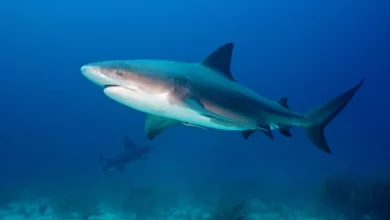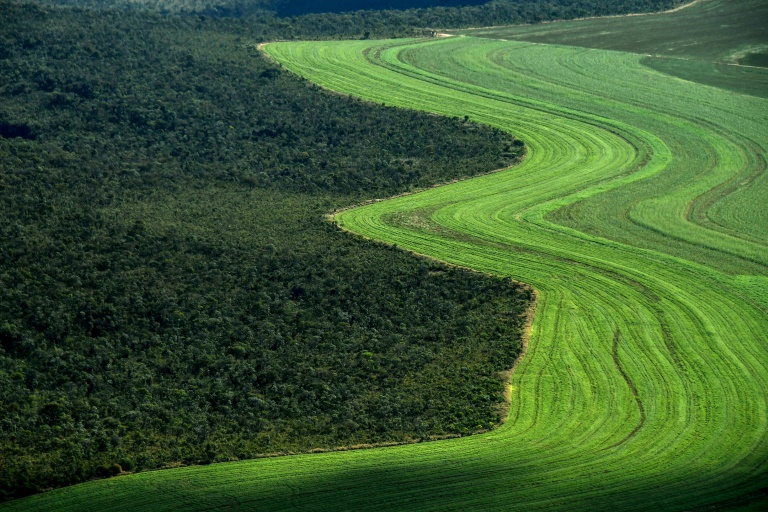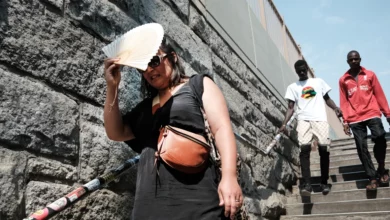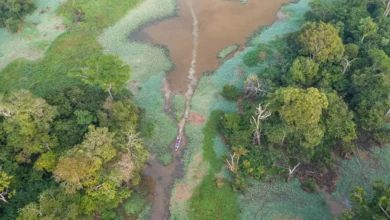Children’s books with a strong moral message are usually the least popular with readers. “Give the dough to baker,” one insists. “Clean your room,” another scolds. These books are more like medicine than entertainment, and children can gulp them down once, but rarely re-visit them.
Yet some “beneficial” books, many on environmental themes, are widely beloved. One of the most well known, Dr. Seuss’s The Lorax, has sold more than 600,000 copies, and in 2012 will be released as a major feature film. Part of the book’s appeal is that it asks readers to participate in a solution, concluding: “Unless someone like you cares a whole awful lot, nothing is going to get better. It’s not.”
This is one of the key things educators say environmental children’s books must do: get the reader to participate. Books also must be well-written, well-drawn, and locally relevant.
In Egypt, eco-aware children’s books have appeared in fits and starts. Back in 1998, First Lady Suzanne Mubarak launched a “Green Corner” library program, which reached more than two dozen libraries. But a 2000 assessment by USAID found that most of the Green Corner books were foreign translations that failed to “engage students in investigating local issues or teach problem-solving skills.”
Recently, however, a crop of locally-written, environmentally-aware children’s books has emerged. These books address Egypt’s seemingly insurmountable pollution problems. And some are fun to read, too.
For the youngest readers, ages two and above, the best is Sayeed…Sayeed, by award-winning author/illustrator Walid Taher.
It’s a short book with simple, bright illustrations. The main character, Sayeed, is not always sayeedan (happy). He loves Egypt’s trees and flowers, the songs of her birds, clean water, clean fruit stands, and sunshine–but doesn’t always find them.
So Sayeed asks his parents: How can we change this? His parents puzzle over the answer, and we are introduced to different characters in the book, each trying to do a small thing to help. More importantly, the book ends with the main characters facing the reader. They say:
“And you, too: Let's think about it together…and work together…so that Egypt's environment becomes clean and beautiful and healthy.”
This book was published as part of Dar El Shorouk’s Al-Bayt al-Akhdar (‘Green House’) series. The series features six other titles, most locally authored and available in Shorouk stores.
Another good option for younger children–this one for readers three years of age and above–is the Alam Simsim title Al-Asmak Tatrok al-Nahr (‘The Fish Leave the River’). Written by Wael Hamdy and illustrated by Hassan Ismael, the book features the nature-loving Nimnim.
As in Sayeed…Sayeed, Nimnim is faced by Egypt’s overwhelming pollution problems, but finds that individuals can–by throwing trash into a basket, by writing letters to factory-owners–indeed make a difference. This book lacks Sayeed’s light charm, but it does feature Alam Simsim’s three most popular characters.
For children four years old and above, there are several books from another prominent and award-winning Egyptian children’s-book author. Rania Hussein Amin, author of the popular Farhana series, says that it is possible to write books that are “beneficial” without being painful.
“Being aware of the message is important, but it’s also very important to try as much as we can to avoid direct messages, which is not very easy to do as an adult writing for children,” she says. “To avoid this, I try to relive my childhood in my mind and write as Rania, the child. In that case I will not lift my finger and say ‘do this and don’t do that,’ but I will [speak] as a child would express himself.”
Amin has written several environment-themed children’s books, published by Dar Elias, including Ain Zahebo Nahr el Nil? (‘Where Did the Nile River Go?’) and Farhana wa el Tabeyah al Masreya (‘Farhana and Egypt’s Nature’).
Another children’s book with a strong but well-delivered message–this one for readers aged five to 15–is Etisalat prize-winning El Noqta El Sooda, (‘The Black Dot’), written and illustrated by Walid Taher. The book does not explicitly address environmental themes, but the characters in the book must work together in order to get rid of the dreaded ‘black dot.’ When Marwan discovers a way to chip away at it, and the children finally work together to defeat the dot, it’s an inspiring triumph for humankind.
For older readers, the Wadi Environmental Science Center (WESC) has put together Ehna wa Kowkab (‘Our Planet and Us’), a graphic novel that follows 14-year-old Tamara in her attempts to clean up Egypt. The comic was produced specifically for last year’s World Environment Day and handed out free at Cairo’s Al-Azhar Park.
According to WESC Senior School Coordinator Sara al-Sayed, the comic “was a new initiative…to reach out to youth and attract them to this seemingly heavy topic.”
Al-Sayed said that the team worked hard not to be overly moralizing or detailed, while at the same time keeping the text scientifically correct. Young readers were invited to give feedback that the writers then used to re-structure the story.
“It was definitely difficult to put together a story that is scientifically accurate without sounding too preachy,” al-Sayed said.
WESC has ongoing plans to attract youth to environmental causes by producing graphic novels. “We will definitely be making more publications, at least for World Environment Day, but we may increase those,” she said.
Egypt, after all, is still in need of its Lorax–and, more than that, its Tamaras and Marwans.




